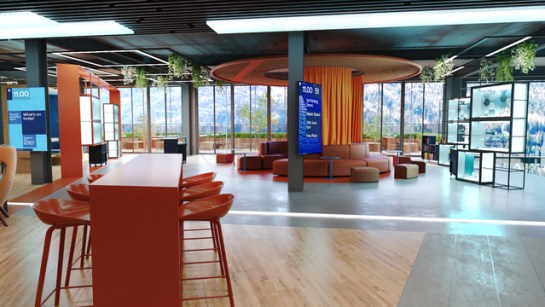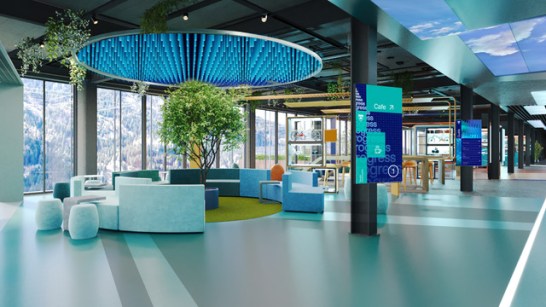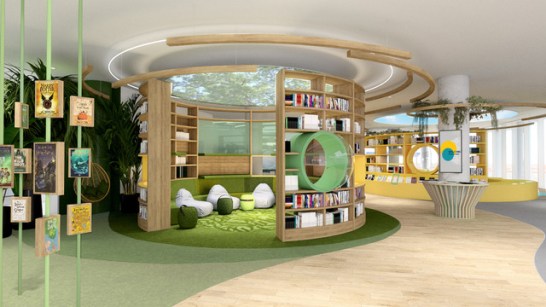Refocusing the design brief
If we want students to excel and be inspired, we should be designing schools that they will actually enjoy, argues David Judge.
The problem with school design
I’ve been pondering a fundamental challenge at the heart of designing schools—a challenge that, in my opinion, lies at the intersection of architecture and what is commonly referred to as “FF&E” (Furniture, Features, and Equipment). These two design practices are crucial in shaping the spaces within schools. However, educational space design often falls short compared to other sectors. I believe this is not just a budget issue, as some might think, but a design brief problem.
Consider the approach to designing a restaurant or a shop experience. The starting point usually revolves around values, inspiration, attraction, the desired emotional experience of customers, and so on. They start with “Who is the customer?” and “What might they like?”. Questions arise like: What do we want to communicate? How do we want people to feel? What makes for a great experience? These considerations intend to attract people, encourage them to stay longer and foster a sense of belonging. The aim is to create a space that people talk about positively after leaving. This is why we return to the places we like the most. Product has a role to play in this, but it is accepted that this kind of attention to detail assists in the attraction and staying.

This thoughtful and holistic approach seems almost absent when designing schools. Instead, the focus tends to be overwhelmingly functional—how many seats are needed, the necessary air changes, appropriate light levels, cleaning efficiency, adherence to budget, and timely completion. While these factors are undoubtedly crucial, this functional “Institutional” approach is why schools feel sterile and unwelcoming. Is that a good idea?
Communicating the feel of a school
The design of space is actually a ‘communication experience’. It speaks volumes about the organization that provides it to you; You sense it, you feel it, whether someone really cares about you or not, and subconsciously, you sense that lack of interest. To create environments where children relish being, we should look at the transformations in the adult world of work. Over the past decade, office designs have evolved to prioritize employee wellbeing, satisfaction, and productivity. Spatial design has been prioritized and contributes to a more pleasant work environment that people find more pleasant to be in. We all now know what a good place to work looks and feels like. If we go for an interview and the office is not very pleasant, we might not even take the job! This is also increasingly important to new university leavers, and companies know it. They now fight to get the best by providing better office designs. It’s that important.
Creating spaces to be enjoyed

It’s high time we applied this approach to school design, creating spaces that feel like they have been designed for the children to enjoy being in; it should be designed ‘for them’ and not as a corporate (Blue logo means blue seats) institutional, boring facility. This shift will foster a sense of belonging, wellbeing, socialization, collaboration, and overall joy in the school environment. We need to shift from merely creating functionally correct spaces to actively considering why and how “Young people” might enjoy being in school,
Designing all spaces

Another critical aspect often overlooked in the school design conversation is the tendency to focus solely on classrooms. While functional classrooms are undeniably important, every other space children interact with throughout the day is equally significant. The library, dining, sports facilities, breakout and specialized environments for subjects like art and science can all play a pivotal role in creating a sense of belonging. Designing a library as a unique space or ensuring that the dining area is enjoyable contributes significantly to the overall sense of wellbeing at school. It’s about recognizing the multifaceted nature of a student’s day and how each space contributes to their day.
We must also expand this thinking through the walls and consider the entire campus inside and out as one continuous learning, social and collaborative experience. A natural, seasonal, learning, socializing and collaborating landscape. A “Learning Garden” yet again designed for them to enjoy.
In essence, the heart of creating a school that children enjoy being in, lies in a mindset shift. We must move from a just functional assessment to a more holistic, experience-driven approach. By prioritizing the design of all ‘space’ within schools as in other sectors, we can create educational environments that foster a love for learning, encourage collaboration, contribute to students enjoying school, and provide a foundation for them to thrive from.
Avoiding the time warp
The children who enter school today have grown up in the ‘Experience Economy’. The malls, restaurants, coffee shops, hotels and even their own homes have been transformed over the last 30 years. School is probably the most boring place they will ever go to apart from hospital. Too often, it must be like stepping back in time. I question is that right.
This suggests there is a fundamental discussion to be had. Is the ‘authoritarian, strict, conformist, institutional approach to school design’ the real problem? Do we need to bring our thinking about school into the experience economy and make it much more enjoyable place to spend your time? I do not mean the architectural ‘Innovation’ experiments of the BSF – Building Schools for the Future – programme. I mean a complete change in our mindset towards the contribution the design of space makes to our lives in general.
Shouldn’t that be applied to school?
#Education #SchoolDesign #FutureOfLearning #StudentExperience.
 David Judge is the Creative Director of international and independent school design specialists, Kampus
David Judge is the Creative Director of international and independent school design specialists, Kampus
All images kindly provided by Kampus.

